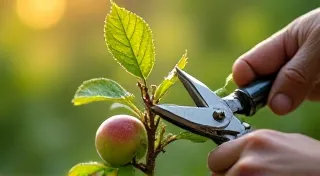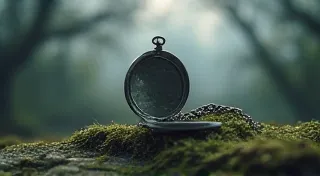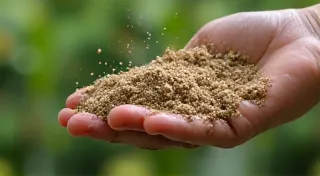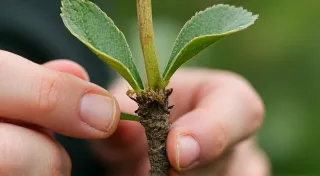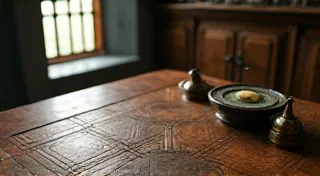The Best Companion Plants for Dwarf Fruit Trees in Containers
Growing dwarf fruit trees in containers is a fantastic way to enjoy fresh, homegrown fruit even with limited space. But did you know that choosing the right companion plants can significantly enhance their growth, health, and fruit production? Companion planting isn't just about aesthetics; it's about creating a mini-ecosystem that benefits your fruit trees. Let's explore some excellent choices for your container-grown dwarf fruit trees.
Why Companion Planting Matters for Dwarf Fruit Trees
Companion plants offer a multitude of benefits, including:
- Pollination Enhancement: Attract pollinators like bees and butterflies to increase fruit set.
- Pest Control: Certain plants repel common fruit tree pests or attract beneficial insects that prey on them.
- Improved Soil Health: Some companions help fix nitrogen or loosen the soil, improving nutrient availability. Ensuring your soil has the right mix is also critical, and you can learn more about the best soil mix for container-grown dwarf fruit trees to really optimize your growing environment.
- Physical Support: Certain plants can provide support for young or sprawling fruit tree branches.
Top Companion Plants for Dwarf Fruit Trees in Containers
Herbs for Pest Control & Pollination
Herbs are often excellent choices due to their strong scents which can deter pests. They also attract beneficial insects. A carefully selected companion planting strategy can often eliminate the need for chemical interventions.
- Marigolds: (Tagetes spp.) These vibrant flowers are a classic companion plant for a reason. They repel nematodes and other soil pests and attract beneficial insects.
- Basil: (Ocimum basilicum) Basil repels aphids, spider mites, and whiteflies, common pests of fruit trees. It also attracts pollinators.
- Mint: (Mentha spp.) While mint can be invasive in gardens, it’s easily contained in a pot. It repels cabbage moths, aphids, and ants. *Be warned: Mint can be vigorous, so ensure adequate space in the container.* Considering the vigor of plants like mint, it’s essential to choose a container size appropriate for both the fruit tree and its companions – too small and rootbound situations can arise.
- Lavender: (Lavandula spp.) Attracts pollinators and repels moths and other insects. It also adds a lovely fragrance to your patio.




Flowers for Pollination & Beauty
Flowers attract pollinators, which are crucial for fruit set. They also simply add beauty to your container garden. Before you even select plants, it's worth considering which specific dwarf fruit tree varieties you're growing and ensuring they’re well suited for container culture. You can learn more about choosing the right dwarf fruit trees for containers to set yourself up for success.
- Petunias: (Petunia spp.) A profusion of colorful flowers that attract bees and other pollinators.
- Nasturtiums: (Tropaeolum majus) These edible flowers attract pollinators and can also act as a trap crop for aphids.
- Borage: (Borago officinalis) Borage flowers are a magnet for bees and other pollinators and are visually striking.



Considerations for Container Size, Pruning, and Seasonal Rhythms
When choosing companion plants, consider the size of your containers. Ensure that the companions won't overwhelm the dwarf fruit tree’s roots. Also, research the specific needs of each plant to ensure they thrive in similar conditions (sunlight, watering, soil). Regular pruning is also essential for maintaining the health and productivity of your dwarf fruit trees. Proper pruning techniques encourage fruiting and keep the tree a manageable size within its container. You can learn more about pruning dwarf fruit trees in containers to master this important aspect of their care. Furthermore, understanding the seasonal rhythms that govern fruit tree growth can significantly improve your success. It's fascinating to delve into the seasonal rhythms and the art of fruitful constraint and how they affect growth patterns and fruiting times.
Beyond the basics of companion planting and container size, it’s worth noting that different dwarf fruit tree varieties will have slightly different needs. A dwarf apple will not necessarily thrive under the same conditions as a dwarf peach. Choosing the right soil mix will also be crucial. Remember to consider factors like drainage, aeration, and nutrient content when selecting your potting mix. A well-draining mix prevents root rot, while a nutrient-rich mix provides the essential elements for healthy growth and abundant fruiting.
Some dwarf fruit trees are also more susceptible to specific pests or diseases than others. Regularly inspect your plants for signs of trouble and take preventative measures. Organic pest control methods, such as neem oil and insecticidal soap, can be effective in controlling pests without harming beneficial insects. Furthermore, ensuring proper air circulation around your plants can help prevent fungal diseases.
Finally, remember that gardening is an ongoing learning process. Don't be afraid to experiment with different companion plants and techniques to find what works best for you. With a little care and attention, you can create a thriving and productive container garden filled with delicious fruit and beautiful blooms!
